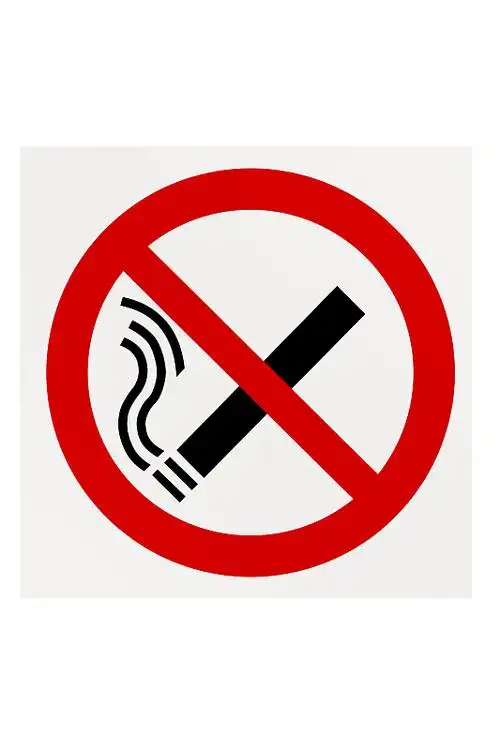The Silent Sabotage: How Smoking Cripples Your Lungs' Self-Cleaning System
Take a deep breath. For most, it's a simple, involuntary act. But within your chest, a microscopic marvel is working tirelessly to make that breath safe. We're talking about the mucociliary escalator, your respiratory system's first line of defense. This isn't science fiction; it's a biological masterpiece happening inside you right now. And one of the most significant threats to its smooth operation is cigarette smoke.
The health risks of smoking, from lung cancer to heart disease, are well-publicized. However, the initial damage—the silent sabotage of your lungs' innate cleaning mechanisms—often goes unnoticed until it's too late. This article delves into the intricate world of respiratory cilia and explains precisely how the toxic cocktail of cigarette smoke dramatically reduces the efficiency of ciliary clearance, setting the stage for chronic illness.
To understand the damage, we must first appreciate the machinery. Your airways, from your windpipe down to the smaller bronchial tubes, are lined with a thin layer of mucus atop a carpet of tiny, hair-like structures called cilia. Think of this system as a sophisticated conveyor belt. The sticky mucus layer acts as a flytrap, capturing inhaled particles like dust, bacteria, viruses, and pollutants. Beneath it, the cilia perform a coordinated, rhythmic beating motion, much like waves in a field of wheat.

These cilia don't just flail about randomly. They have a precise beat pattern: a powerful, effective stroke that pushes the overlying mucus upward and toward the throat, followed by a recovery stroke. This constant, wave-like motion propels the contaminated mucus blanket out of the lungs. Once it reaches the throat, you unconsciously swallow it, and stomach acids neutralize any potential pathogens. This process is the cornerstone of respiratory tract mucus clearance, a vital mechanism of lung defense that keeps your airways sterile and functional.
Now, let's introduce the antagonist: cigarette smoke. It isn't a single substance but a complex mixture of over 7,000 chemicals, hundreds of which are toxic, and at least 70 are known carcinogens. From the moment this hot, toxic gas is inhaled, it begins its assault on the mucociliary escalator.
The first point of attack is on the cilia themselves. Key toxins like formaldehyde, hydrogen cyanide, and acrolein are particularly damaging. These chemicals are directly toxic to the ciliated cells, a phenomenon often referred to as ciliotoxicity from cigarette smoke exposure. They disrupt the delicate internal structure of the cilia, impairing their ability to beat effectively. Imagine pouring tar and glue onto a complex piece of clockwork; the gears would slow and eventually seize. Similarly, these toxins interfere with the energy-producing mitochondria within the cilia and disrupt the intricate dynein motor proteins that power their movement. The result is a direct and measurable reduction in ciliary beat frequency. Slower beats mean a slower, less effective conveyor belt.
But the assault is two-pronged. While the cilia are being paralyzed, smoke also triggers a drastic change in the mucus they are trying to move. In a healthy state, the mucus has just the right consistency—viscous enough to trap invaders but fluid enough for the cilia to push it along. Smoking shatters this balance. The irritated lining of the airways, in a misguided attempt to protect itself, goes into overdrive, producing far more mucus than usual. This leads to hypersecretion of airway mucus.
Worse than the quantity is the change in quality. The mucus becomes thicker, stickier, and more viscous due to alterations in its molecular composition. It transforms from a slippery gel into a dense, tenacious sludge. This condition is a hallmark of impaired mucociliary clearance in smokers. The already-weakened cilia now face the Herculean task of trying to move a substance with the consistency of hardened syrup. This dramatically increases the mucus viscosity in smoker's lungs, creating a physical barrier that the cilia simply cannot overcome.
The consequences of this dual damage are profound and create a vicious cycle of respiratory decline. With the mucociliary escalator broken, the trapped mucus isn't just an inconvenience; it becomes a breeding ground for trouble. Bacteria and viruses, which would have been swiftly evicted, now find a warm, nutrient-rich environment in the stagnant mucus, allowing them to multiply and cause infections. This is a primary reason why smokers are more susceptible to ailments like bronchitis and pneumonia.
Furthermore, the persistent presence of thick mucus and the ongoing inflammation caused by smoke irritants lead to the characteristic "smoker's cough." This cough is the body's desperate, last-ditch effort to clear what the cilia cannot. It's a forced, mechanical clearance mechanism that replaces the elegant, silent efficiency of the ciliary system. Over time, this chronic inflammation and the accumulation of toxic particles can cause structural damage to the airway walls themselves, a condition known as remodeling, which is a key feature of Chronic Obstructive Pulmonary Disease (COPD).
The link between smoking and ciliary dysfunction is also a critical factor in the development of more severe conditions. By failing to clear carcinogens like those found in tobacco tar, the lungs are exposed to these DNA-damaging agents for much longer periods. This prolonged contact significantly increases the risk of cellular mutations and the subsequent development of lung cancer. Therefore, the impact of tobacco smoke on mucociliary transport is not just a minor issue; it is a fundamental step in the pathogenesis of smoking-related cancers.
Many smokers wonder if switching to alternatives like vaping or heated tobacco products offers a safer path. The truth is, the research is still evolving, but early indications are concerning. While these products may eliminate the combustion of tobacco, the inhaled aerosols still contain fine particles, nicotine, and other flavoring chemicals that can cause irritation and inflammation. Studies have shown that e-cigarette vapor can also reduce ciliary beat frequency and promote mucus hyper-secretion, leading to a similar, though potentially less severe, state of impaired mucociliary clearance. The long-term effects of chronic smoking on lung defense are well-documented, and it is premature to assume that newer nicotine delivery systems do not pose a significant threat to this delicate system.
The human body possesses a remarkable capacity for healing. The most compelling question for many is: can this damage be reversed? The answer is a hopeful, but qualified, yes. The single most effective intervention is smoking cessation. From the moment you stop smoking, the acute inflammatory response begins to subside.
Studies have shown that the cilia start to recover. The reduction in ciliary beat frequency can be reversed, and over weeks to months, the cilia can regain their normal function and coordination. The goblet cells calm down, reducing the volume of mucus produced, and its composition can gradually return to a healthier, less viscous state. This process of restoring lung cilia function after quitting is slow and depends on the extent and duration of prior smoking. While the lungs can heal significantly, some damage, especially if it has progressed to COPD, may be permanent. Nevertheless, quitting smoking is the ultimate act of giving your mucociliary escalator a fighting chance to repair itself and resume its vital role in protecting your lungs.
In conclusion, the impact of smoking on the respiratory cilia clearance system is a devastating and direct cause of long-term health problems. It's a story of a silent, efficient, and life-sustaining system being systematically dismantled by a barrage of toxins. By understanding this process—the ciliotoxicity, the altered mucus viscosity, and the resulting breakdown of the mucociliary clearance mechanism—we can better appreciate the profound wisdom in avoiding tobacco in all its forms. Every cigarette smoked is an active strike against your body's best defenders. Protecting your lungs begins with honoring the incredible, microscopic work of the cilia, allowing them to do their job unimpeded, ensuring every breath you take is as clean and healthy as possible.










